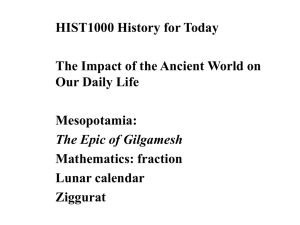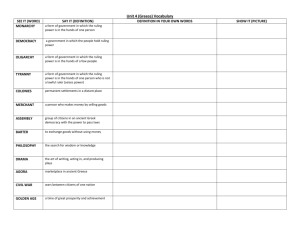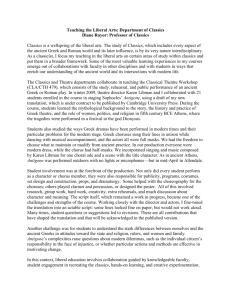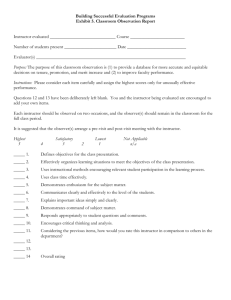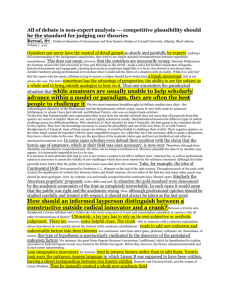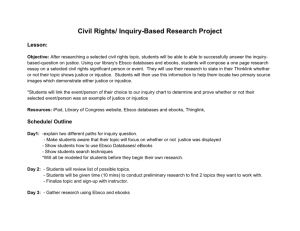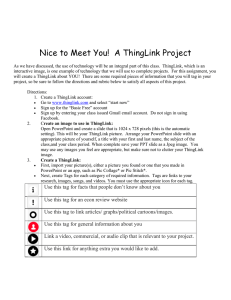Seeing the Classical Heroes
advertisement
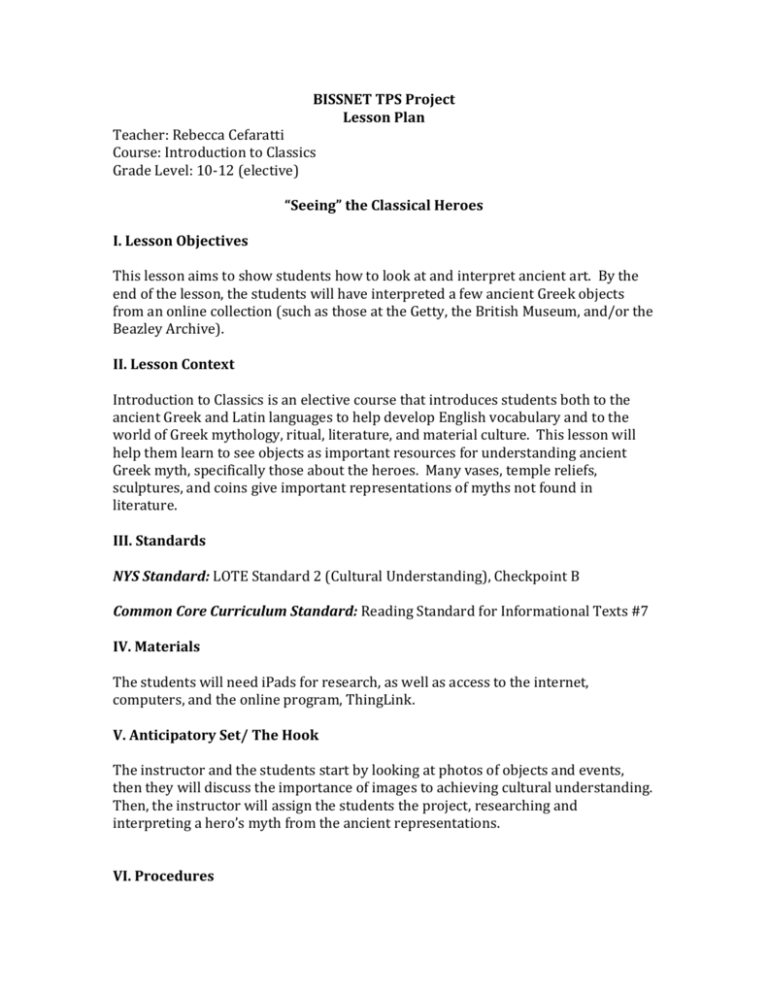
BISSNET TPS Project Lesson Plan Teacher: Rebecca Cefaratti Course: Introduction to Classics Grade Level: 10-12 (elective) “Seeing” the Classical Heroes I. Lesson Objectives This lesson aims to show students how to look at and interpret ancient art. By the end of the lesson, the students will have interpreted a few ancient Greek objects from an online collection (such as those at the Getty, the British Museum, and/or the Beazley Archive). II. Lesson Context Introduction to Classics is an elective course that introduces students both to the ancient Greek and Latin languages to help develop English vocabulary and to the world of Greek mythology, ritual, literature, and material culture. This lesson will help them learn to see objects as important resources for understanding ancient Greek myth, specifically those about the heroes. Many vases, temple reliefs, sculptures, and coins give important representations of myths not found in literature. III. Standards NYS Standard: LOTE Standard 2 (Cultural Understanding), Checkpoint B Common Core Curriculum Standard: Reading Standard for Informational Texts #7 IV. Materials The students will need iPads for research, as well as access to the internet, computers, and the online program, ThingLink. V. Anticipatory Set/ The Hook The instructor and the students start by looking at photos of objects and events, then they will discuss the importance of images to achieving cultural understanding. Then, the instructor will assign the students the project, researching and interpreting a hero’s myth from the ancient representations. VI. Procedures Instruction #1: The student will choose a hero or heroine that she would like to know about. Instruction #2: The student will select images from an online database (either from the Beazley Archive (at Oxford University), from the British Museum digital collections, from the Perseus Project collection, or from the Getty digital collections) that have the hero of her choosing as a subject. At least one image must be a Greek vase. They will formulate some of the questions that they want to ask regarding the objects, then research the answers with the help of the instructor and the librarian. Instruction #3: The students will then create a ThingLink for each object, linking aspects of the objects to online resources and print sources that better explain the decoration, material, etc. Instruction #4: The students will put the ThingLinks into a Google Drive presentation so that it can easily be shared with the instructor and the rest of the class. VII. Conclusion Students will present one or more of their images to the rest of the class. Then, the instructor and the entire class will “parse” an image together. I hope to present many images to the students throughout the year, and this lesson will help them begin to analyze and evaluate objects for their historical/cultural value. VIII: Assessment Each student will be evaluated based on the quality of their “product” (the ThingLink), as well as the quality of their research on the ancient objects. The students will also fill out a self-evaluation after they complete their Google Drive presentations. IX. Differentiation The instructor can change the number of objects she assigns to any given student depending on the nature of the student’s accommodation. The instructor is also able to provide extra time for those students who have such a stipulation in their accommodations. Each student will have plenty of time in class and outside of class to consult me and the librarian. X. Reflection I will fill this section in after I teach the lesson. XI. Librarian Plan of Support Our librarian, Judy Slawinski, will be an invaluable partner in ensuring the success of this project. She will help the students research their ancient objects, using resources in the library and on the internet. She will need to guide the students to evaluating what online resources are valuable and which should be avoided.
